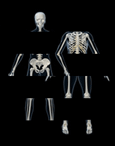
| Rolf method |
 |
 |
 |
|
The Rolfing method starts with a basic series of ten to fifteen individual sessions of manipulation of tissues and reorganization of the body. Start by playing in areas that are more "hardened" in the process of movement, sprawling throughout the connective tissue. These areas are being Gradually released, providing a feeling of more space, stretching, lightness and relaxation. The work can be done with the patient lying down, sitting or standing, in accordance with the strategy laid down by the professional of rolfing. The sessions are developed in a logical sequence and gradual, the next session is at the same time, a continuation of the previous one and a preparation for the next. Each session has specific objectives and works with certain areas of the body, in various anatomical and regions at different levels of depth. We walked from the surface and the edges to the Center and in depth, differentiating, organizing and integrating all parts of the body as a whole in its functions of movement. Without ever losing sight of the integration of the body as a whole, the objectives of professional Rolfing are being successively achieved and based cumulatively. From the individual differences of the customers, their limitations, difficulties and specific qualities, Structural Integration professional studies a plan of specific sessions and suitable for every customer. Alongside these procedures, the customer is photographed, full length, in four positions (front, back and two profiles), since the first session, during the process and in the final session. These photographs are a valuable instrument for assessment of the dossier, in addition to being important to assist customer perception and re-education. The work begins with the observation and analysis of body structure and the patterns of movement of the client. Together, the Structural Integration practitioner and client, discuss the sensations and perceptions, observing the alignment of limbs, the relationship between them, identifying areas of immobility and of tension, areas with rotations and twists, but also specific problems (usually pain) that the customer complains.
|

